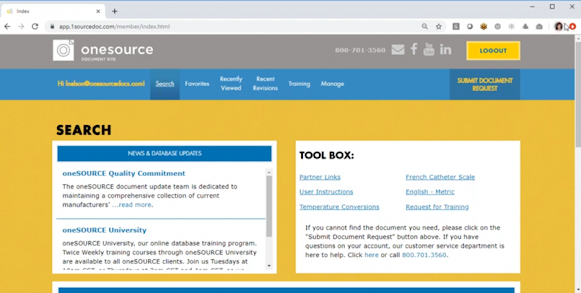Martin Li, MA, CRCST, CER, CIS, CHL
In the Sterile Processing Department (SPD), quality control
ensures safe and effective patient care. The challenge
lies in maintaining consistency while meeting the complex demands of modern
healthcare. As an SPD Educator, I have witnessed how structured methodologies
such as Six Sigma and Root Cause Analysis (RCA) can transform quality control
by improving performance and driving a culture of continuous improvement. These
tools provide SPD teams with the framework to identify inefficiencies, analyze
issues, and implement sustainable solutions.
Six Sigma: Streamlining Processes for Enhanced Outcomes
Six Sigma is a data-driven methodology that aims to reduce defects and variability in processes to achieve near-perfect outcomes. In the
SPD, this translates to minimizing instrument reprocessing errors, improving
workflow efficiency, and maintaining compliance with regulatory standards. The
methodology follows the DMAIC cycle—Define, Measure, Analyze, Improve, and
Control—ensuring that improvements are systematically identified and sustained.
For example, an SPD team implementing Six Sigma might begin
by defining a specific problem, such as high rates of wet loads after
sterilization. They gather data on sterilizer performance, drying times, and load configurations through the measurement phase. The analysis phase helps
pinpoint the root causes—perhaps inadequate drying cycles or improper loading
techniques. Improvements are then implemented, such as adjusting sterilization
parameters and providing staff training. Finally, controls such as regular
audits and performance monitoring ensure sustained compliance.
Research highlights the effectiveness of Six Sigma in
healthcare. According to Antony et al. (2019), Six Sigma projects have
consistently demonstrated measurable improvements in process efficiency and
patient safety, underscoring its applicability in the SPD. By embracing this
methodology, SPD teams not only reduce errors but also optimize resource
utilization and enhance overall performance.
Root Cause Analysis: Tackling Issues at Their Source
Root Cause Analysis (RCA) is a problem-solving method
focused on identifying and addressing the underlying causes of issues rather
than their symptoms. In the SPD, RCA is particularly effective in resolving
recurring problems, such as instrument contamination, missing inventory, or
delayed tray availability. By identifying the root causes, RCA prevents
recurrence and supports a culture of accountability and learning.
A practical example of RCA in the SPD might involve
investigating repeated incidents of bio-burden found on surgical instruments.
The process begins by collecting data on where and when the issue occurs,
followed by engaging stakeholders in discussions to uncover contributing
factors. Using tools like the “Five Whys” technique or fishbone diagrams, the
team identifies root causes—perhaps inadequate cleaning during pre-treatment or
malfunctioning automated washers. Corrective actions, such as revising pre-cleaning
protocols or repairing equipment, are then implemented and monitored.
The importance of RCA in healthcare is well-documented.
Carroll and Rudolph (2020) highlight its role in fostering a learning culture
by addressing systemic failures and promoting preventive measures. When applied
consistently, RCA empowers SPD teams to resolve complex challenges effectively,
ensuring reliable instrument reprocessing and minimizing risks to patient
safety.
Integrating Six Sigma and RCA for Comprehensive Quality
Control
While Six Sigma and RCA are powerful individually, their
integration provides a comprehensive approach to quality control in the SPD.
Six Sigma’s structured methodology ensures continuous process improvement,
while RCA addresses specific issues at their source, preventing recurrence.
Together, these tools create a feedback loop where improvements are sustained,
and new challenges are proactively managed.
For instance, an SPD might use Six Sigma to streamline tray
assembly processes, identifying inefficiencies and standardizing workflows.
Simultaneously, RCA can address any errors or delays that arise during
implementation, ensuring that solutions are robust and sustainable. This
combined approach fosters a culture of excellence, where quality control
becomes an intrinsic part of daily operations.
Cultivating a Culture of Continuous Improvement
Beyond methodologies, achieving excellence in quality
control requires a cultural shift within the SPD. As an SPD Educator, I
emphasize the importance of leadership commitment, staff engagement, and
ongoing education. When team members understand the rationale behind quality
control initiatives and actively participate in their implementation, they
become stakeholders in the department’s success.
Moreover, continuous improvement initiatives such as Six
Sigma and RCA should be supported by robust training programs. Equipping SPD
staff with the knowledge and skills to apply these tools ensures their
successful implementation and empowers the team to take ownership of quality
control processes.
Conclusion
Six Sigma and Root Cause Analysis are indispensable tools
for improving quality control in SPD. By reducing process variability,
addressing root causes of issues, and fostering a culture of continuous
improvement, these methodologies enable SPD teams to achieve excellence in
patient safety and operational performance. From my experience as an SPD
Educator, the adoption of these approaches not only enhances the department’s
efficiency but also reinforces its role as a critical pillar in the healthcare
ecosystem.
References
Antony, J., Snee, R. D., & Hoerl, R. W. (2019). Lean Six
Sigma: Yesterday, today, and tomorrow. International Journal of Quality
& Reliability Management, 36(2), 237–246.
doi:10.1108/IJQRM-03-2018-0074
Carroll, J. S., & Rudolph, J. W. (2020). Designing
organizational systems to support learning from RCA: Embedding adaptive problem
solving and collective mindfulness. Health Services Research, 55(S2),
144-152. doi:10.1111/1475-6773.13498
Chiarini, A., & Baccarani, C. (2020). Lean Six Sigma for
sustainable value creation in healthcare. The TQM Journal, 32(1), 79-93.
doi:10.1108/TQM-01-2019-0010















